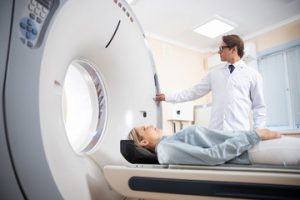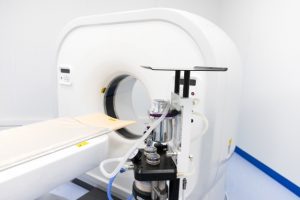What Is The Difference Between CT Scan And MRI Scan?
CT scan and MRI scan are two different medical imaging techniques that are used to diagnose various medical conditions. Both types of scans produce images of organs, bones and joints.
But many people are unaware of the difference between MRI and CT scan, and the procedure. Therefore we must know the few factors that set them apart.
What Is A CT Scan?
Computed Tomography(CT) or Computerized Axial Tomography(CAT) uses X-rays to produce detailed images of organs, bones, blood vessels and tissues. An X-ray machine is used for this purpose. This imaging technique is used by doctors to diagnose some of the conditions such as-
Brain disorders: A CT scan can be used to detect tumours, haemorrhage, Brain calcification and blood flow problems into the brain.
Circulatory diseases: Used to diagnose aortic aneurysms, blood vessel blockages, heart diseases, pulmonary edemas and kidney problems.
Lung diseases: A CT scan can identify signs of pleural effusion, fibrosis, tumours, collapsed lungs, emphysema, to name a few.
Abdominal abnormalities: Identifies growth of masses in the kidney, pancreas and liver.
Skeletal system disorders: Sometimes, images created by a regular x-ray won’t be enough for doctors to detect a bone condition. In such cases, a CT scan is better to detect osteoporosis damage, complex fractures, spinal cord injuries, and bone tumours.
Urinary bleeding causes: A CT scan could detect the reason why a person’s urine contains blood.

Procedure
Before the scan, your doctor may give you a special dye called contrast material since it helps to improve the visibility of internal structures. The contrast dye will be injected into your system. But if your digestive tract is scanned, then you will be asked to drink the contrast. You will be asked to wear a hospital gown. You need to remove any metal objects from your body since it can interfere with the results. Then you will be asked to lie down on a table that slides into the scanning device.
The device rotates around you and produces images of multiple cross-sections of your body. You have to lie still since even a slight movement can blur the images. The procedure takes 20 minutes to one hour. Once the procedure is complete, the images are sent to a radiologist, and your doctor will explain the results to you later on.
What Is An MRI Scan?
Magnetic Resonance Imaging(MRI) uses radio waves and magnets to produce detailed images of organs, bones and tissues. This imaging technique is used by doctors to diagnose some of the medical conditions in-
Brain: An MRI can diagnose aneurysms, stroke, multiple sclerosis, and medical conditions that origin and affect either brain or spinal cord.
Bone: Can diagnose tumour or infection on or near both bones and soft tissues.
Blood Vessel: Irregularities such as artery blockages, aneurysms, damage from previous heart attacks, medical conditions of heart or blood vessels appear on MRI.
Bowel: Inflammatory bowel conditions such as Crohn’s disease and ulcerative colitis can be detected with an MRI.
Joint: Abnormalities in joint, ligament and tendon
Liver: Damage caused either by disease or lifestyle such as Liver cirrhosis
Breast: Breast tumour appears on MRI

Procedure
The procedure is similar to a CT scan. You will either be asked to drink the contrast material or have it injected into your system, depending on the body part being scanned. You have to dress in a medical gown and will be asked to remove metal objects from your body. You have to lie on the scanner table, that slides into the scanning device. You should wear either an earplug or headphone since the machine makes a lot of noise. You will be asked to hold your breath for specific scans. The whole procedure lasts up to one hour or even longer.
Based on your medical condition, your doctor will choose the scanning technique apt for you. But what is the difference between CT scan and MRI scan?
- When compared to a CT scan, MRI produces more detailed images of soft tissues and behind bones. Moreover, MRI scans do not use harmful radiations.
- CT scan is less expensive and costs half the price of MRI. The average MRI scan cost in Kerala ranges from Rs 4000 to Rs 9500. On the other hand, CT scan costs Rs 2250, which is half the price of MRI.
- The time required for the procedure depends on whether or not you need a contrast. Comparatively the procedure for CT scans takes less time. It takes 20 minutes to maximum one hour, but MRI takes an hour or longer. If a diagnosis should be made in an emergency, then doctors prefer CT scan over an MRI.
- During an MRI scan, you will be asked to wear either an earplug or headphones since the scanning device produces a loud noise. But during a CT scan, you don’t require an earplug since it’s much quieter than an MRI device.
Advantages of CT Scan
- The doctor can decide if a surgery is required or not.
- Minimises the need for exploratory surgery
- Cancer diagnosis and treatment
- Reduces prolonged hospitalisation
- Helps in the treatment of stroke, injury, and cardiac disease.
- Provides the view of the larger body portion.
- Quick image acquisition
- Monitor if a treatment is working or not.

With a CT scan, patients can be scanned quickly, so that doctors can evaluate their medical condition. Sometimes, to control internal bleeding, a surgery might be required, and in such emergency cases, the CT images will be beneficial to the surgeons since it gives them an idea of where they should operate. The success of surgery depends on the CT image. Moreover, the medical information that CT provides varies with that provided by other imaging techniques such as MRI, ultrasound, SPECT etc. Besides all this, the CT scan is ideal for large people because of its open design. Suppose if a person has a stroke, and if the doctors need to determine the cause quickly so that they can start with the treatment, then a CT scan will be beneficial. They can find out if the stroke is either due to a blocked artery or by haemorrhage.
Advantages of MRI Scan
- Non-invasive and do not use radiation.
- Less likely to cause an allergic reaction with iodine substances contained in contrast.
- Gives a detailed image of soft tissues such as herniated discs and torn ligaments.
- Produces hundreds of images from any direction or orientation.
- Can cover larger body portions
- Determine if cancer has spread or not.
- Detects diseases that CT can’t detect, such as uterine cancer, prostate cancer and some liver cancers.
- Creates a better image of metastases to the bone and brain.

Choosing the Right Scan
Before carrying out a scan, a doctor takes into consideration some factors.
- If a person has claustrophobia or any other reasons that make the scan intolerable to them.
- If a woman is pregnant
- The details required for the image
- Reason for scan
Who Should Not Have a CT Scan?
Not everyone can undergo a CT scan. The scan is not harmful, but you will be exposed to radiation while undergoing a scan. There is less chance of developing cancer from this radiation. Normally doctors avoid a CT scan for children, and people who need multiple scans since too much exposure to CT scan as a child can lead to cancer.
If you are allergic to iodine in contrast dyes, it will be better if you choose an MRI instead of CT scan. It leads to severe allergic reactions.
There is a risk for pregnant women who undergo a CT scan since the radiations can affect the unborn child. Discuss the risks of radiation with the doctor.
Who Should Not Have an MRI Scan?
Even though there are low levels of risk for an MRI, some have to avoid an MRI scan. Since MRI scan generates a strong magnetic field, those with metallic implants in their body should avoid an MRI. Besides this, those with the following in their body should reconsider their option:
- A pacemaker
- Aneurysm clips
- Dark tattoos
- An IUD
- Eye implants
- Shrapnel
- Artificial joints
- Orthopaedic hardware
The devices mentioned above contain iron-based metal. So it might be pulled away from the body because of the magnets in the MRI. Pacemakers can stop working. Aneurysm clips might be pulled away, causing severe bleeding. Some tattoo inks are metallic, which can react with the magnets in an MRI. But those with implants made of titanium can undergo an MRI.
If you have kidney or heart problems and need a contrast while scanning, you need to discuss which scan is apt for you with your doctor. You can undergo an MRI scan If you have extreme claustrophobia. You can inquire whether you need an open MRI or need a sedative so that you won’t move during the scan.
Since the 1980s, pregnant women used to undergo an MRI without any fear, whether it would harm either the mother or the unborn child. But still, doctors have no idea how the magnets could affect an unborn child below four months. Discuss with the doctor if you really need an MRI scan vs CT scan, especially if you are using a contrast agent. Unless there is a necessity that you must undergo an MRI, the better you avoid it.
Summary
Both CT scan and MRI scan are comparatively safe procedures. With the information after conducting the scan, a doctor can diagnose medical conditions properly. Moreover, what makes both the scans different is essential in choosing the right scan. Just ensure that you discuss your concerns before the scan, or ask any questions lingering in your mind so that you will be comfortable with the doctor’s choice.